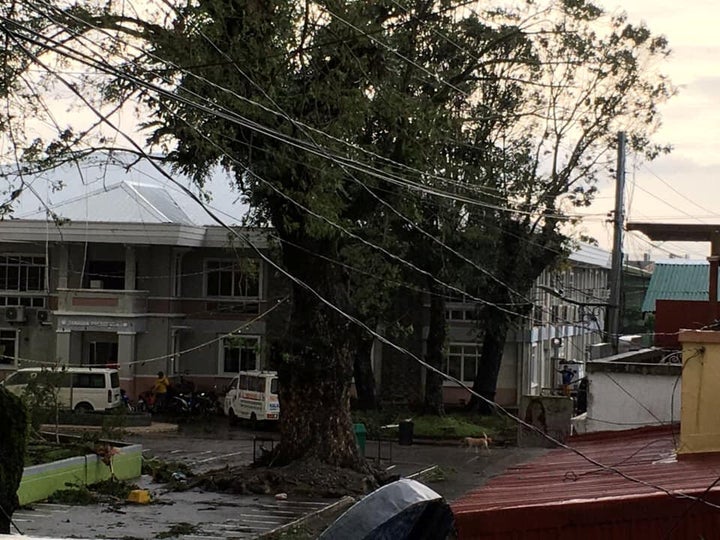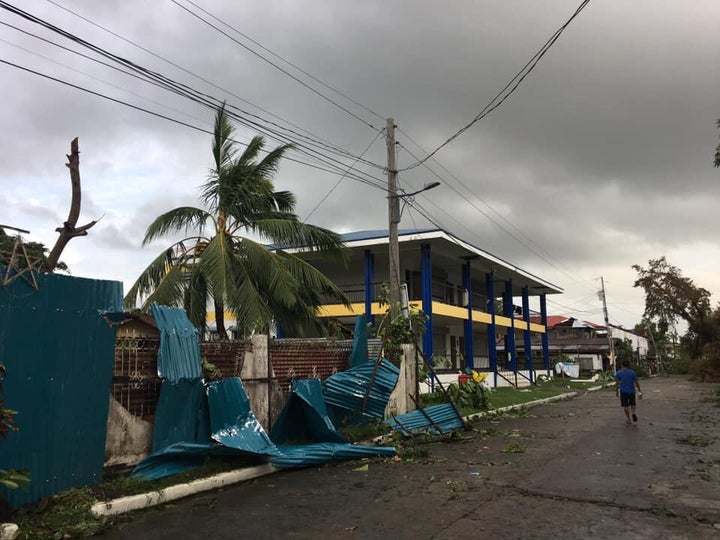
At least 20 people have been killed after a typhoon barrelled through the central Philippines over Christmas, forcing thousands more to flee their homes.
Typhoon Phanfone hit the Philippines late on Tuesday with winds of up to 120 kph and gusts of 150 kph, heavy rain and flooding.
Reuters reported that more than 58,000 people were evacuated from their homes before the storm, which caused widespread property damage.
Meanwhile, the typhoon left many people stranded in sea and airports at the peak of holiday travel, set off landslides, engulfed low-lying villages with floods, downed trees and electrical posts and knocked out power in entire provinces.
One disaster response officer described the battered coastal town of Batad in Iloilo province as a “ghost town” on Christmas Day.
“You can’t see anybody because there was a total blackout, you can’t hear anything. The town looked like a ghost town,” said Cindy Ferrer, of the regional Office of the Civil Defence.

The storm weakened slightly on Thursday as it blew into the South China Sea with sustained winds of 120kph and gusts of 150kph after lashing island after island with fierce winds and pounding rain on Christmas Day, the weather agency said.
Most of the 20 deaths reported by officials were due to drowning, falling trees and accidental electrocution.
A father, his three children and another relative were among those missing in hard-hit Iloilo province after a swollen river inundated their shanty, officials said.
The typhoon hit Eastern Samar province on Christmas Eve and then barrelled across the archipelago’s central region on Christmas, slamming into seven coastal towns and island provinces without losing power, government forecasters said.
Provincial officials, army troops, police and volunteers spent Christmas away from home to tend to thousands of displaced residents in town gymnasiums and schools turned into emergency shelters.
About 20 typhoons and storms batter the Philippines each year.
The South East Asian nation is also located in the Pacific “Ring of Fire”, where earthquakes and volcanic eruptions often occur, making the country of more than 100 million people one of the world’s most disaster-prone.
